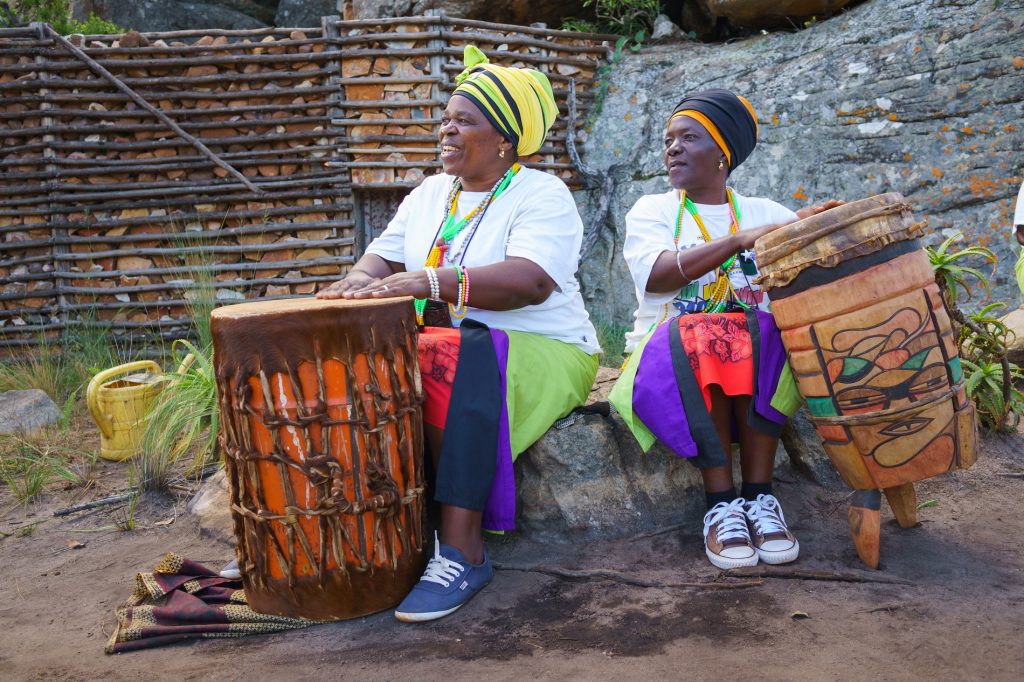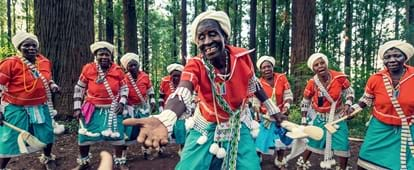The Main Principles Of South African Culture Today
The Main Principles Of South African Culture Today
Blog Article
Unknown Facts About South African Culture Today
Table of ContentsFacts About South African Culture Today RevealedThe South African Culture Today DiariesThe South African Culture Today IdeasThe Best Strategy To Use For South African Culture TodaySouth African Culture Today - Truths6 Simple Techniques For South African Culture Today
This adheres to with singing and drum whipping. The bride and groom after that meet with the senior citizens and discuss the relevance of their union. A matter of value in Zambian towns is the passing away of liked ones. All participants of the town put money, effort and time with each other for the burial of the deceased.Music and dance is a very vital aspect of the Zambian culture. The numerous tribal devices have their own dance types; nevertheless, makishi is typical among all tribes.
The Buzz on South African Culture Today
When it comes to songs, drums are made use of the most, with a range of drumming events. In Zambia, bulk of the individuals are Christian; Protestant and Roman Catholic. There are tiny teams of Muslims and Hindus, with the rest adhering to local native tribal beliefs.

South African heritage and society is profoundly diverse, and contains various teams of people who each have their very own traditions and beliefs. Having such a diversity of people and cultures is what makes South Africa so one-of-a-kind. In the real feeling of the expression, we are a rainbow country.
South Africa has about 3 hundred thousand Portuguese people living in it. Making it the 7th on the checklist of nations with one of the most Portuguese individuals in it outside of Portugal. Portuguese is not only a culture, however it is also a language and a nationality. Portuguese individuals originate from the nation of Portugal in Europe, nevertheless, due to Portugal (like numerous various other nations in Europe) exploring the world and overcoming other countries during the 15th 20th centuries, South Africa has what we call Portuguese South African's living in it.
The Best Strategy To Use For South African Culture Today
Amongst the noticeable attributes of the topography is a plateau that covers nearly 2 thirds of the facility of the country. The plateau facility climbs towards the southeast, where it climaxes in the Drakensberg array, part of an escarpment that separates the plateau from the seaside areas. The Drakensburg consists of Champagne Castle, the highest possible top in the country.
The region north of the Witwatersrand, called the bushveld, slopes downward from east to west towards the Limpopo River, which forms the global boundary. The western area of the plateau, the middleveld, additionally comes down in the direction of the west and varies in altitude in between the highveld and bushveld. Between the Drakensburg and the eastern and southerly coastline, the land comes down to the sea.
Nearer the coast there is a low-lying level called the eastern lowveld. Southwest of the plateau the nation comes to be progressively more dry, paving the way to the stony desert of the Great Karroo, approached the east by the lower, much better watered plateau of the Little Karroo. Dividing the dry southerly inside from the sandy littoral of the southern coast and West Cape is an additional variety, the Langeberg.
Unknown Facts About South African Culture Today
The nation's racially, ethnically, and politically divided background has actually created nationwide and subnational icons that still operate as symbols of the country, and others symbols that are accepted only by certain teams. The monoliths to white settler conquest and political supremacy, such as the Afrikaner Voortrekker ("pioneer") Monument in Pretoria and the Rhodes Monolith click resources recognizing the British colonial empire building contractor and Cape prime priest Cecil Rhodes, continue to be sectarian signs.
The first modern-day residents were the San ("bushman") hunter-gatherers and the Khoi ("Hottentot") individuals, who rounded up animals (South African culture today). The San may have existed for thousands of years and left evidence of their existence in hundreds of old cave paintings ("rock art"). Bantu-speaking clans that were the forefathers of the Nguni (today's amaZulu, amaXhosa, amaSwazi, and vaTsonga individuals) and Tswana-Sotho language groups (today's Batswana and Southern and Northern Basotho) migrated down from east Africa as very early as the fifteenth century

The 2 previous republics of the Orange Free State and Transvaal (South African Republic) were developed by Afrikaner inhabitants who beat and dispossessed the Basotho and Batswana. Lesotho would certainly have been forcibly incorporated into the Orange Free State without the extension of British security in 1869. The best marriage of the country arised from the South African War (18991902) between the British and both Afrikaner republics, which minimized the country to ruin at the start of the twentieth century.
Afrikaners historically considered themselves the only real South Africans and, while giving complete citizenship to all homeowners of European descent, refuted that status to individuals of shade until the democratic transition of 1994. British South Africans keep a sense of cultural and social connection to Great Britain without deteriorating their identification as South Africans.
About South African Culture Today
The diversity and fragmentation within ethnic collections and the equilibrium of tensions in between those groups during the additional hints twentieth century protected against interethnic civil conflict. While intergroup stress over resources, entitlements, and political supremacy continue to be, those problems are as likely to match Zulu against Zulu as Zulu against Xhosa or African versus Afrikaner.
From colonial India, British vendors and managers brought the curved steel decorative roofs and slim lace job columns that still exemplify the terraces of homes in the areas and cities throughout the nation. Homes of worship contribute a crucial architectural facet even in the tiniest communities. In enhancement to the skyrocketing steeples and timeless stonework of Afrikaans Dutch Reformed churches, Anglican churches, synagogues, mosques, and Hindu shrines provide selection to the spiritual architectural scene.

Slaughtering and the developing of conventional grain beer are necessary in securing the participation and goodwill of the forefathers who are taken into consideration the guardians of good luck, success, and health. Indian communities keep their indigenous culinary customs and apply them on Islamic image source and Hindu ritual and ceremonial celebrations. Afrikaners and Coloured people gather at weekends and unique occasions at multifamily barbecues called braais, where area bonds are strengthened.
Since this was the key economic business of both black Africans and white colonists, conflict in between those teams fixated the possession of grazing land and livestock. In 1867, the biggest ruby deposits on the planet were found at Kimberley in the west central area. The wide range from those fields assisted fund the exploitation of the biggest gold coral reef in the world, which was discovered on the Witwatersrand in 1886.
What Does South African Culture Today Mean?
This brought about misconceptions and deliberate misrepresentation in the negotiations of white inhabitants and federal government authorities with African principals throughout the colonial duration (South African culture today). In the establishment of African reserves, some elements of common and chiefly "tribal trust fund" land period were protected, and even in white rural areas, kinds of communal period were still practiced in areas with African neighborhoods
After the democratic makeover of 1994, programs for land restitution, redistribution, and reform were set up, but progression has actually been slow-moving. The white minority still manages eighty percent of the land. Following farming land intrusions in Zimbabwe, the Department of Land Affairs has actually pledged to speed up land redistribution.
Report this page